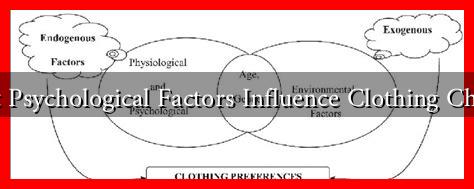-
Table of Contents
What Psychological Factors Influence Clothing Choices
Clothing is more than just a means of covering the body; it is a powerful form of self-expression that reflects our identity, mood, and social status. The choices we make in our attire are influenced by a myriad of psychological factors. Understanding these influences can provide valuable insights into consumer behavior, personal identity, and social dynamics. This article explores the psychological factors that shape our clothing choices, supported by research, examples, and case studies.
The Role of Self-Identity
One of the most significant psychological factors influencing clothing choices is self-identity. Clothing serves as a visual representation of who we are and how we wish to be perceived by others. According to a study published in the journal *Psychology of Fashion*, individuals often select clothing that aligns with their self-concept, which can be influenced by various factors, including:
- Personal Values: Clothing choices often reflect personal beliefs and values. For instance, someone who values sustainability may opt for eco-friendly brands.
- Social Identity: Group affiliations, such as cultural, religious, or professional identities, can dictate clothing choices. For example, members of certain religious communities may wear specific garments as a sign of their faith.
- Life Stage: Different life stages, such as adolescence or parenthood, can influence clothing choices. Teenagers may gravitate towards trends that signify rebellion or individuality.
Emotional Influences on Clothing Choices
Emotions play a crucial role in our clothing decisions. Research indicates that our mood can significantly affect what we choose to wear. For example, a study conducted by the University of Hertfordshire found that individuals tend to wear brighter colors when they are in a good mood and darker colors when they are feeling down. This phenomenon can be explained by the following emotional influences:
- Comfort and Security: People often choose clothing that makes them feel comfortable and secure. For instance, during stressful times, individuals may opt for cozy, familiar garments.
- Confidence Boost: Certain outfits can enhance self-esteem. Wearing formal attire, for example, can make individuals feel more authoritative and confident in professional settings.
- Emotional Expression: Clothing can serve as a canvas for emotional expression. For instance, someone going through a breakup may choose to wear darker, more subdued colors as a reflection of their feelings.
Social Influences and Peer Pressure
Social dynamics also play a significant role in clothing choices. The desire to fit in or stand out can lead individuals to make specific fashion decisions. Peer pressure, social media, and cultural trends can heavily influence what people wear. Key social influences include:
- Trends and Fads: Fashion trends often dictate what is considered stylish. Social media platforms like Instagram and TikTok have accelerated the spread of trends, leading to rapid changes in clothing choices.
- Peer Approval: Many individuals seek validation from their peers through their clothing choices. This can lead to conformity, where people wear similar styles to fit in with their social circles.
- Celebrity Influence: Celebrities and influencers often set fashion trends. For example, the popularity of athleisure wear surged after celebrities began endorsing it.
Case Studies and Statistics
Several studies have highlighted the psychological factors influencing clothing choices. A notable case study conducted by the *Journal of Consumer Research* found that individuals who identified strongly with a particular group were more likely to adopt the clothing styles associated with that group. Additionally, a survey by the *American Psychological Association* revealed that 62% of respondents felt that their clothing choices were influenced by their mood.
Furthermore, a report from *Statista* indicated that the global apparel market is projected to reach $2 trillion by 2026, underscoring the economic impact of clothing choices influenced by psychological factors.
Conclusion
In conclusion, the psychological factors influencing clothing choices are complex and multifaceted. Self-identity, emotional states, and social influences all play critical roles in shaping what we wear. Understanding these factors can provide valuable insights for marketers, psychologists, and individuals seeking to understand their own clothing choices. As fashion continues to evolve, the interplay between psychology and clothing will remain a fascinating area of study.
For further reading on the psychology of fashion, consider exploring resources from the *Fashion Institute of Technology* or the *American Psychological Association*.

